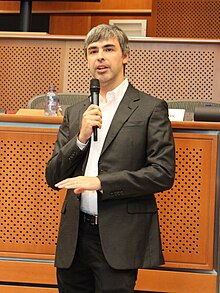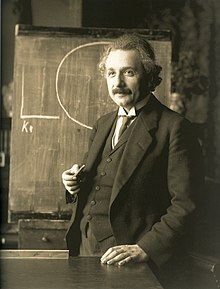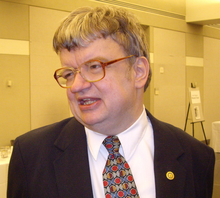It has long been speculated that secret societies, mystery schools, intelligence agencies and other clandestine organizations have advanced learning methods superior to anything taught in even the most prestigious universities. Methods which are only ever taught to the chosen few – initiates who have all sworn an oath to keep the group’s syllabus in house and never reveal any of the teachings to outsiders.
On the rare occasions the public get wind of advanced learning techniques – usually via information leaked to the Internet, sometimes via published books – those techniques are seldom tested or given the attention they deserve and so largely remain in obscurity. One reason for this could be they’re often not comprehensible because whoever is behind them has withheld the overall curriculum.
There’s many a tale of mysterious figures from secretive groups mastering skills, languages and even complex career paths so quickly that most would say it’s impossible. But that opinion assumes we know of, or have access to, all the learning methods known to man.
The purpose of having the orphans study all these diverse fields was not for them to just become geniuses, but to become polymaths – meaning they would be geniuses in a wide variety of fields. Whether they were studying the sciences, languages, international finance, politics, the arts or martial arts, they would not stop until they’d achieved complete mastery of that subject. Kentbridge himself had encyclopedic knowledge about almost everything, and expected nothing less from his orphans. –The Ninth Orphan
If we are to assume there are superior learning methods not taught in our mainstream education system then this naturally leads to other questions. What if your child’s top-notch education is actually a second-rate education? Or, if you are a student, what if that professor you look up to is no genius, but just a tool of an inferior learning institution?
None of this is to disrespect formal education. It plays a vital role in society and the betterment of Mankind, and only a fool would doubt the importance of getting a good education.
Nor are we suggesting there isn’t the odd learning institution that teaches at least some accelerated learning techniques, although such establishments would probably exist on the fringes of mainstream education.
Youngsters learn while they play at a Montessori school.
The Montessori education system is possibly one such example as it allows children to have greater freedom of expression and to learn in playful and organic ways. Successful alumni of the Montessori system include Jeff Bezos, the founder of Amazon, as well as Wikipedia founder Jimmy Wales and the co-founders of Google, Sergey Brin and Larry Page.
Messrs Brin and Page…Montessori alumni.
In general however, accelerated learning methods are more likely to be found outside the modern education system. Let’s face it, wherever in the world you go, real prodigies are the exception not the norm in the present system. Those rare individuals society labels geniuses are almost always freaks of nature and are naturally gifted rather than being diligent students who became geniuses because of their education.
In The Ninth Orphan, Nine is a pure genius and exhibits a level of intelligence rarely if ever seen in any character in literature. He has a photographic memory, can read entire books in five minutes flat and speaks dozens of languages. Plus he learns new skills extremely fast and is highly adaptable – so much so that he’s nicknamed the human chameleon.
How Nine reached that level of intelligence, though, is merely implied or hinted at in this first book in the series.
In its prequel, The Orphan Factory, we had to design an education system that would reveal exactly how Nine grew up to become that smart. This was quite a challenge as our setting was no Ivy League college. Rather, it was the Pedemont Orphanage, a rundown institution in Riverdale, one of Chicago’s poorest neighborhoods.
We had to do a lot of research into radical types of learning. Highlights from that research are covered in this chapter.
Having both gone through the traditional education system and finding it laborious and uninspiring, we found it fun to write about an alternative and more accelerated form of learning in our trilogy. Even so, it took several years of study before we felt confident enough to write about what it would take to create youngsters with intellects as advanced as those of our Pedemont orphans.
We predict, or sincerely hope, that formal education will one day be reflective of what occurs within the fictional Pedemont Orphanage – minus the assassination training of course!
“I’ll be a genius and the world will admire me. Perhaps I’ll be despised and misunderstood, but I’ll be a genius, a great genius.” –Salvador Dalí. Written in his diary at the age of 16.
Polymathing on Chicago’s Far South Side
A book critic who reviewed The Ninth Orphan criticized our protagonist Nine for having an IQ, or intelligence quotient, higher than Einstein’s. The strong implication in the review was that this was a ridiculous character decision we (the authors) had made.
That all sounds like a valid criticism on the surface, but had this critic gone beyond his own sphere of knowledge and done a little research he would have discovered there are many people whose IQ’s have been recorded to be higher than Einstein’s. American author Marilyn Vos Savant, for example, has an IQ of 192; Russian chess grandmaster and former world champion Garry Kasparov has an IQ of 194. Incidentally, Einstein’s IQ was estimated in the 1920’s to between 160 and 190.
Albert Einstein and Marilyn Vos Savant.
But wait, there’s much more when it comes to the world of super geniuses…
Quite a few individuals have tested in excess of a 200 IQ score, including South Korean civil engineer Kim Ung-yong (210), former child prodigy and former NASA employee Christopher Hirata (225) and Australian mathematician Terence Tao (225-230).
And last but not least is American child prodigy, mathematician and politician William James Sidis who had an IQ of 250-300. He graduated grammar school at age six, went to Harvard University at age 11 and graduated cum laude at the age of 16. Sidis, who died in 1944, could fluently speak 40 languages by the time he reached adulthood.
Child prodigy William Sidis…IQ 250-300.
Remember, the average IQ is 100 and approximately 50% of those tested score between 90 and 110. According to the book IQ and the Wealth of Nations by Dr. Richard Lynn and Dr. Tatu Vanhanen, the top five countries in terms of average IQ’s of their citizens are Hong Kong (107), South Korea (106), Japan (105), Taiwan (104) and Singapore (103). Further down the list, China, New Zealand and the UK share equal 12th position with a 100 average, while the US is in 19th position with an average citizen IQ of 98.
However, many scholars in the 21st Century now believe IQ scores aren’t everything and it’s likely areas of intelligence exist that cannot be measured in any test. This is possibly substantiated by the number of successful and iconic individuals who recorded very low IQ scores. These include the once highly articulate and outspoken boxer Muhammad Ali who, as a young man, scored only 78 – an IQ so low it supposedly denotes a mild mental disability!
And of course, the list of the world’s so-called most intelligent excludes extremely bright individuals in impoverished parts of the world where IQ’s are rarely tested. The Indian mathematical genius, Srinivasa Ramanujan (1887-1920), was an example of such incredible geniuses who defy all explanation.
Srinivasa Ramanujan…changed the face of mathematics.
Born into poverty in Erode, India, Ramanujan discovered extraordinary mathematical formulas, despite being self-taught with no formal training in mathematics. He changed the face of mathematics as we know it and left many highly-educated and acclaimed Western mathematicians completely gobsmacked.
Furthermore, the other high-IQ individuals mentioned earlier are only in the top bracket of those who agreed to undergo IQ tests and allow their scores to be published. It’s quite conceivable certain elite individuals belonging to secret societies, mystery schools or intelligence agencies do not reveal their IQ scores. That secret intelligence factor was the basis for our fictional Pedemont orphans who we either state or imply have IQ’s of around 200 or higher.
As a result of the accelerated learning techniques within the diverse curriculum that begins before they can even walk or talk, the orphans can assimilate and retain phenomenal amounts of information. By their teens, the child prodigies possess greater amounts of knowledge than even adult geniuses. They are able to solve complex problems, are fully knowledgeable about almost any current world subject or historical event, and are to all intents and purposes organic supercomputers and human library databases.
Again, our orphans are exposed to highly advanced learning methods so that they will have at their disposal all the necessary skills and information to be able to overcome life-and-death problems that may arise on future espionage assignments. They’re taught there is no challenge or question that cannot be overcome, solved or answered as long as they fully utilize the power of their minds.
Each child at the Pedemont Orphanage eventually becomes a polymath – a person who is beyond a genius. It’s a word we use throughout the trilogy as we felt it best describes the orphans’ off-the-scale intellects.
A polymath is actually a multiple-subject genius. However, the criteria for a polymath is someone who is an expert in vastly different, almost unrelated fields. For example, an artist who works in the film, theatre and literary industries and who is a masterful actor, screenwriter, novelist, film director and film producer would not qualify as a polymath as those fields are all artistic mediums and closely related.
Rather, a polymath is someone who has excelled in, or completely mastered, a variety of unrelated or loosely related subjects. These could be as diverse as economics, dance, architecture, mathematics, history, forensic science, cooking and entomology.
And before you go calling yourself a polymath, don’t forget you must be an expert in each field. Unfortunately being a jack-of-all-trades and master-of-none doesn’t count.
One of the best examples of a polymath is Leonardo da Vinci. Born in Italy in 1452, he was a sculptor, painter, architect, mathematician, musician, engineer, inventor, anatomist, botanist, geologist, cartographer and writer. Although Leonardo received an informal education that included geometry, Latin and mathematics, he was essentially an autodidact, or a self-taught individual.
Leonardo…polymath extraordinaire.
The man who many have called the most diversely talented person who ever lived, left behind an array of masterpieces in the painting world alone, including The Last Supper, Mona Lisa and The Vitruvian Man.
The Last Supper…another Leonardo masterpiece.
The subconscious was always favored over the everyday conscious mind, which was considered too slow to be effective. –The Orphan Factory
Outrunning the conscious mind
Developing a genius mindset essentially comes down to two things: operating at speed and using the subconscious mind more than the conscious. This intuitive or relaxed approach to study is the polar opposite of traditional and mainstream forms of education. Apart from some artistic subjects like music or dance, learning institutions generally require pupils to concentrate hard at all times. In other words, students have no choice but to always use their conscious minds, thereby suppressing the great reservoir of the subconscious.
When we are forced to think s-l-o-w-l-y like this our brain functions at well below optimum levels. That’s why school students often feel exhausted as studying in this fashion is incredibly draining. But how can we feel mentally drained when neuroscientists and brain researchers agree we each only use a tiny percentage of our brain?
Those who have read The Orphan Trilogy will recall our orphans often go into a daydream state whenever they need answers to life-and-death situations. This is because when you defocus you allow your intuitive self, or your subconscious mind, to deliver you the answers you need. It just happens, without reaching for it.
We’ve all experienced pondering a problem all day long only to find we receive the solution when forgetting about the problem and thinking of something else. When we stop concentrating so hard, we allow our subconscious to flourish, and those who do this more than others are often called geniuses.
As head of the Pedemont Orphanage, Tommy Kentbridge says to his students in The Orphan Factory, “The subconscious mind is where all higher intelligences exist. Every genius throughout history – Tesla, Einstein, Da Vinci – tapped into the infinite power of their subconscious minds.”
Studies have shown the subconscious mind can process around 11 million bits of information per second. The conscious mind, however, can only process about 15 to 16 bits of information per second. Quite a difference!
One of the best ways to bring the subconscious mind into the equation is to outrun the conscious mind by going so fast it literally can’t keep up. So, at Chicago’s Pedemont Orphanage, our orphans do everything at speed. They’re also taught how to learn things indirectly instead of directly. By skirting around the edges of complex subjects, the children never get information overload or lose their way.
As we wrote in The Ninth Orphan, “In the tradition of Leonardo da Vinci and history’s other great polymaths, the children were taught how to fully understand anything by using an advanced mental technique where they would simply life their minds into comprehension.”

To life your mind into comprehension is once again the polar opposite of modern education systems which imply there’s only one way to learn: consciously and with intense concentration.
While this indirect way of learning may sound flaky, it is actually backed up by hard science and is not remotely mystical. This approach is about brainwaves and understanding, or recognizing, the optimal state for learning. When you hit the right groove, it’s possible to learn quickly and in a satisfying, even enjoyable, fashion.
It is that singularity of mind top sportsmen and martial arts masters achieve. Psychologists sometimes refer to this ultimate mental state as the zone, but it’s really just about having the most effective brainwaves for learning.
Any time study feels laborious the student is most likely in the beta brainwave, which occurs when the conscious mind is governing. A beta-dominant mind is the perfect recipe for mediocrity and boredom.
The subconscious mind comes into play in other less common brainwaves such as alpha, gamma, theta and delta. These brainwaves have also been shown to be activated when test subjects are laughing, daydreaming, meditating, singing, dancing or spontaneously moving about. Now how many math or English teachers would tolerate those activities in their classrooms?
What if there really is a much quicker, less methodical way of learning that allows you to learn without learning?
Sounds paradoxical, doesn’t it?
All the activities the orphans participated in were performed well beyond average speed, be it playing chess, reading books, doing martial arts or learning languages. Kentbridge and specially recruited tutors would push their young charges at accelerated speeds so their conscious minds couldn’t keep up. Only when they outran their conscious minds like this could the subconscious kick into action. –The Orphan Factory
Speed-reading
One of the most important skills our Pedemont orphans possess is the ability to speed read. Having vast amounts of knowledge, or being walking encyclopedias, is a common trait in geniuses, and even more so in polymaths.
Probably the simplest way to gain this amount of knowledge is to learn to read very, very fast.

Speed-reading is therefore at the core of the radical education program we designed in our conspiracy thriller series. However, our orphans’ technique is much more advanced than the majority of speed-reading programs currently available to the public. Many such programs simply offer complementary reading skills rather than allowing for a whole new way to absorb the written word.
As we say in The Ninth Orphan, “It wasn’t so much speed-reading as mind photography – a technique where the practitioner taps into the brain’s innate photographic memory. The orphans were taught how to use their eyes and open their peripheral vision to mentally photograph the page of a book, magazine or newspaper at the rate of a page per second. Then they’d consciously recall every detail as if they’d read the material at normal, everyday reading speed. Tens of thousands of books, on all manner of subjects, were sent to the Pedemont Orphanage to keep up with the children’s prolific reading habits.”
The technique we wrote about was inspired by the most sophisticated speed-reading methods in the real world, as well as analysis of renowned speed-readers. It’s also based on the brain’s scientifically proven ability to pick up things subliminally and rapidly. By incorporating peripheral vision and photographic memory, it’s possible to pick up or photograph entire pages at a time rather than one word at a time.
This method enables the Pedemont orphans to read at the rate of about 20,000 words per minute. That’s many times faster than most readers can manage. In fact, the average reading speed is only 300 words per minute, or about one page per minute.
Although some skeptics – along with one or two book critics who reviewed our series – have expressed doubt over whether the human brain can absorb such vast quantities of data all at once, speed-reading is not fiction. And it has some famous devotees.
Various US Presidents were confirmed or rumored speed-readers. They include Theodore Roosevelt, Franklin Roosevelt, John F. Kennedy and Jimmy Carter.
Theodore (Teddy) Roosevelt, a self-taught speed-reader, is reported to have read a book before breakfast every single day while serving as president. Teddy’s recall was said to be perfect and he could often quote from the books he read.
Evelyn Wood…coined the phrase ‘speed reading’.
Kennedy studied under American speed-reading expert Evelyn Wood who could read at an impressive 6000 words a minute. JFK claimed he could read at around 2000 words per minute with a very high comprehension rate.
Carter, who also studied speed-reading during his time in the White House, took courses with his wife Rosalynn.
The fact that Dwight D. Eisenhower said “Don’t be afraid to go in your library and read every book” may well allude to the fact he was yet another US president who could speed read. Who else but a speed-reader would have the time or ability to read every book in their local library?
Bestselling author, life coach and motivational speaker Anthony Robbins practices speed-reading and recommends it to audiences, personal clients and his readers.
In 2007, when J.K. Rowling’s Harry Potter and the Deathly Hallows was published, six-time world champion speed-reader Anne Jones was the first to read it. Jones finished the 200,000-word, 759-page hardcover book in 47 minutes flat. Immediately afterwards, she completed a book review and sent it out to media outlets to prove her total comprehension of the story.
Harry Potter…done and dusted in 47mins!
Jacques Bergier, French Resistance fighter, spy, journalist, chemical engineer and author of the bestselling book The Morning of the Magicians, was a born speed-reader. He started reading magazines and newspapers as a toddler, and by the age of four was fluent in three languages. By the time he reached adulthood, Bergier was reading 10 books a day.
New Yorker and State University graduate Howard Berg was listed in the 1990 Guinness Book of World Records as the world’s fastest reader. His reading speed was clocked at a remarkable 25,000 words per minute. Berg says his skill was developed out of boredom. He spent his childhood in the library, which was apparently the only place in the world that interested him.
Autistic savant Kim Peek is one of the world’s foremost speed-readers. The real-life inspiration for Dustin Hoffman’s character in the 1988 movie Rain Man, Peek reads at between 10,000 and 20,000 words per minute and has a 98% comprehension rate. His method is to read two pages simultaneously, one with each eye. Spending most of his days in the public library in Salt Lake City, Utah, Peek has read many thousands of books.
Kim Peek…the original Rain Man.
Of all the examples of speed-readers, living or deceased, Peek’s methods are closest to those described in The Orphan Trilogy. We sincerely hope in years to come scientists will figure out exactly how Peek so readily absorbs information from books so that children can be taught the technique the world over.
Since the term speed-reading was coined by Evelyn Wood more than 50 years ago, the skill has featured in various TV series and Hollywood movies. In the 1996 feature film Phenomenon, lead character George Malley, played by John Travolta, exhibits extraordinary speed-reading skills. Dr. Spencer Reid, one of the main characters on the hit TV series Criminal Minds, is also a speed-reader.
There’s a speed-reading scene in the 2004 spy film The Bourne Supremacy, starring Matt Damon, in which CIA agent Pamela Landy, played by Joan Allen, is seen reading agency files at rapid speeds. Landy uses her finger to run up and down over text on each page. This finger pointing method is a real speed-reading technique known as Meta Guiding. In Good Will Hunting – another Matt Damon movie – Damon, who plays natural-born genius Will Hunting, is seen alone in his apartment flipping through page after page of a book without pause. Whether these two films on the actor’s resume are just a coincidence or whether he’s a speed-reader himself, is anyone’s guess.
Brainwave entrainment
As mentioned, brainwaves are a crucial part of accelerated learning techniques. It’s proven that when individuals move out of normal waking brainwaves (beta) into other brainwaves (alpha, theta, delta and gamma) they enter the ideal state in which to absorb new information. Whether the learning is analyzing complex equations, or memorizing facts, or becoming an expert in martial arts, it makes no difference.
Our children at the Pedemont Orphanage use brainwave generators and biofeedback machines to reach optimal frequency for study. This method of altering the mind is known as brainwave entrainment.
Gamma brainwaves, which are the highest frequency brainwave, are held in high regard at the orphanage. As we wrote in The Orphan Factory: “The children performed mind photography in uncommon brainwaves for regular wakeful consciousness. In this case it was predominantly gamma waves, and it allowed them to tap into the genius of their subconscious minds.”
Besides being present while learning languages or forming new ideas, Gamma waves are also vital for recalling memories. And the faster the gamma brainwave, the faster the memory recall is – yet another advantage in doing things at speed.
Sleep-learning
Even at night, the Pedemont orphans’ education continues through hypnopædia, or sleep-learning. Audio courses play through headphones they wear while asleep and our orphans are able to learn new subjects like high finance or foreign languages.
Hypnopædia comes from the Greek hypnos, meaning ‘sleep’, and paideia, meaning ‘education’. Although still not conclusive, some research has shown the subconscious mind is very receptive to absorbing knowledge whilst we sleep.
There are numerous references to hypnopædia in Aldous Huxley’s 1932 dystopian novel Brave New World. Thirty years later, this unusual learning method was also mentioned in A Clockwork Orange, another dystopian novel, by Anthony Burgess. The popularity of these bestselling novels coincided with the release of positive results of preliminary studies into sleep-learning, ensuring that hypnopædia became relatively well known around the world and interest in it blossomed.
However, from the early 1960’s onwards, more in-depth scientific studies were conducted in laboratories in the US and the UK, disproving the theory that humans could learn during sleep.
Even though many students in numerous countries kept claiming they achieved better exam results after listening to audio recordings on subjects whilst asleep, official studies simply did not confirm this. As a result, hypnopædia was discredited for about 50 years and slipped into obscurity in scientific and education circles.
Only in the last few years has the potential learning method resurfaced. Recent studies are beginning to contradict earlier experiments and it may not be long before hypnopædia is proven to be a reality.
For example, on August 29, 2012, The Huffington Post ran a news article under the headline Sleep Learning May Be Possible: Study. The article mentioned a new study by researchers at the Weizmann Institute of Science, which demonstrated test subjects learnt new information while asleep.
In an interrelated experiment, scientists at Illinois’ Northwestern University discovered that taking a 90-minute nap immediately after studying helps solidify knowledge in the brain. They taught new things – both physical and mental – to people and then tested them on how well they remembered and applied the knowledge taught. There were two groups involved – one whose members slept after learning and one whose members stayed awake the whole time. Those who slept in the lab after studying showed significantly better mastery of the subject matter when tested.
So hypnopædia is once again on the scientific radar and it will be interesting to see the results of future studies.

With the help of virtual reality and biofeedback technologies, the orphans were taught how to guide their minds to reach certain brain frequencies – like Alpha, Theta and Delta – at will. The purpose of slipping into these particular frequencies was to allow the right brain to take over, as opposed to the left-brained consciousness dominant in most people. Whenever the orphans needed to access their higher intelligences, they would enter a daydream and simply intuit the answers. That way, they could bypass thinking, and just know. Within the Omega family, intuition was favored over logical thought patterns. –The Ninth Orphan
Brain gland activation
Activating dormant brain glands is another technique used inside the Pedemont Orphanage.
All individuals have a certain amount of dormant or underutilized brain areas. Every human brain ever mapped scientifically has shown at least some inactive cells and neurons. This area of neuroscience, especially concerning little known brain glands, may hold the answer as to why we only use such a small percentage of our brains.
As we wrote in The Orphan Factory: “Rare earth magnets were embedded inside each helmet for the purpose of activating certain brain glands. Glands that were dormant in the average person.”
Neuromagnetic helmets and similar brain stimulation technologies are not just confined to the realms of fiction.
Transcranial direct current stimulation, or TDCS, is a brain stimulation technique. It’s carried out by applying a helmet or cap to the individual’s head. TDCS targets specific parts of the brain with low voltage electrical currents. This allows for the alteration of electrical states of neurons in targeted areas of the brain.
TDCS is in its infancy, but early studies have shown it enhances motor skills, memory recall and concentration. As a result, the US military now employs TDCS to assist fighter pilots, snipers and other personnel.
Transcranial magnetic stimulation, or TMS, is a similar non-invasive brain enhancement technology except it uses magnets instead of electricity. TMS’s magnetic fields are capable of altering neurons in targeted areas of the brain.
Neuromagnetic helmets and similar devices have been nicknamed ‘zap caps’ and preliminary studies show they have the potential to improve brain function in numerous ways.
Polyglotting in the Pedemont Orphanage
The Pedemont orphans all speak a large number of languages and are therefore polyglots. Although we never actually specify how many, it’s implied in our trilogy that each orphan can speak dozens of languages. They also have the ability to learn new ones quickly, and more than once we show our orphans, or orphan-operatives, mastering languages in the days leading up to a new mission.
While this may seem far-fetched, there have been persistent reports of CIA agents mastering languages within one week. If true, this is most likely a direct result of classified learning techniques or brain technologies not available to the general public.
In 2004, British autistic savant Daniel Tammet shocked Icelandic peoples when he appeared on live television to demonstrate his overnight mastery of their notoriously complex language. Tammet spoke fluent Icelandic, having only studied the language for seven days.
Virtual reality training
Virtual reality is another advanced learning technology utilized within the walls of the orphanage. However, we specify it’s not virtual reality as most of us know it.
This excerpt from The Orphan Factory explains what we are getting at: “Like most Omega technologies, it was a technology that was decades ahead of official science, and although virtual reality was widely known and available to the public, this military version had been suppressed from the masses because of its incredible power.”
Although a suppressed form of the technology lies very much in government cover-up theories, learning with virtual reality is proven to be effective in a wide variety of diverse fields. Learning via this technology’s computer-simulated environment is currently used the world over in the military, medical, aviation and architectural sectors to name but a few.

Virtual reality…like the real thing.
Virtual reality allows users to practice as if they are actually engaging in activities in the real world. The difference between reality and virtual reality can sometimes be so small it’s indistinguishable to the human brain.
Or to put it another way, as we state in The Orphan Factory: “Carrying out assignments under the influence of this particular software was no different to performing them in real life – at least not as far as the mind was concerned.”
Superluminal particles
The physics of faster-than-light (also known as superluminal) phenomena may also hold great potential for accelerated learning.
In his 2014 book Superluminal Particles and Hypercomputation, leading Japanese scientist Dr. Takaaki Musha claims that the superiority of the human brain is due to the superluminal particles generated in the microtubules of the brain.
The blurb for Superluminal Particles and Hypercomputation mentions that the book “describes a series of theoretical explorations probing the possibility that superluminal particles exist, and if so the consequences their existence may hold for biology and computing. Starting from the standpoint of a model of the brain based on superluminal tunneling photons, the authors included in this volume have described theoretically the possibility of a brain-like computer that would be more powerful than Turing machines, would allow non-Turing computations, and that may hold the key to the origin of human consciousness itself”.
A former senior employee of Japan’s Ministry of Defense where he developed naval weapon systems, Dr. Musha claims this generated superluminal field connects individuals with the outer field of the Universe and he contends this may explain human consciousness as well as the collective mind of Mankind.
Dr. Musha’s theory relates to the quantum mechanics scale known as decoherence, which measures the time to maintain the quantum coherence between particles. If the decoherence time is long in an individual’s brain, it permits the person to connect to the outer superluminal field easily.
“I think that the activity of superluminal particles can be maintained by the structure of the metamaterial in the microtubules,” says Dr. Musha. “The metamaterial has a non-natural property such as negative refractive index, which permits superluminal evanescent photons to move loosely in the nervous system. If this structure malfunctions in an individual, many problems can occur such as Alzheimer’s disease.”
Dr. Musha believes decoherence time can possibly be extended by mental training. If this is true, then genius abilities like photographic memory could result from the right sort of training.
If an individual’s brain can connect with the superluminal field which is part of all other living organisms, then it may be possible for that individual to come from an awareness of what has been termed the universal brain. Dr. Musha claims this could explain the extraordinary abilities of the human mind, such as the enigma of Indian mathematical genius Srinivasa Ramanujan.
Superluminal Particles and Hypercomputation also proposes that the true nature of the human electromagnetic field may be similar to that of the Universe as a whole.
Dr. Musha continues, “The ancient Indian Vedas texts have lent a comparable view of unified consciousness with a key difference being the process of human ascension from stage to stage. Instead of oneness with the Universe, the Vedic vision of consciousness emphasizes the importance of attaining knowledge and pure intelligence.
“This is similar to the Vedic concept that the totality of our consciousness is comprised of three levels: the subconscious, the conscious, and the superconscious mind. These levels of consciousness represent differing degrees of intensity of awareness. Intuition and heightened mental clarity flow from superconscious awareness. The conscious mind is limited by its analytical nature, and therefore sees all things as separate and distinct.
“We may be puzzled by a certain situation, because it seems unrelated to other events, it’s difficult to draw a clear course of action. By contrast, because the superconscious mind is intuitive and sees all things as part of a whole, it can readily draw solutions.”
Dr. Musha also believes that if science can utilize superluminal particles for computer technology, it will one day be possible to build a hypercomputer system which has its own consciousness – like the HAL 9000 computer in the Stanley Kubrick film, 2001: A Space Odyssey.
Dr. Takaaki Musha’s Superluminal Particles and Hypercomputation.
Other genius techniques of the elite
The Orphan Trilogy covers numerous other advanced learning methods, Baroque music being one. This form of classical music is played to our orphans from when they are babies in the womb right through their childhood. Baroque music, especially the works of Mozart, have been shown to aid students when learning new things or recalling information.
In The Orphan Factory, the orphans lie in enclosed flotation tanks, also known as isolation tanks. This is called sensory deprivation. Brainwaves are altered while in this deeply relaxed state, making the floating participants very receptive to new information.
The ingredients of real-world flotation sessions are simply water and salt, and the individual floats alone for about an hour inside the tank.
Celebrities known to have used such flotation tanks include Robin Williams, John Lennon, Jeff Bridges and Susan Sarandon. William Hurt, the star of Altered States, a 1980 feature film about isolation tanks, is another celebrity said to have practiced sensory deprivation in his private life.


William Hurt…star of ‘Altered States’ and practitioner of sensory deprivation.
Various sports teams, including the Philadelphia Eagles and the Dallas Cowboys have also used flotation tanks, as have Olympians such as American track star and nine-time gold medal-winner Carl Lewis.
There are references to chess throughout the trilogy. Our orphans play rapid-fire matches known as Lightning Chess in which entire games are completed in 10 minutes or less. This is based on the theory that by playing the board game from a young age, certain parts of a child’s brain develop quicker than normal, especially areas relating to strategy. Playing Lightning Chess and multiple games simultaneously once again relates to thinking so fast that the conscious mind must yield to the superior subconscious.
And finally, a mysterious substance known as Ormus is given to the orphans every day at the Pedemont Orphanage. By ingesting it, the children activate their entire DNA/RNA cellular system, which not only unlocks their physical body’s true potential, but also stimulates their conscious, subconscious and unconscious minds.

Often referred to as White Gold or White Gold Powder, Ormus is a real substance discovered by science several decades ago. As it has been said to balance both hemispheres of the brain and therefore allow for whole brain learning, some believe Ormus to be a natural (legal) version of the smart drug Bradley Cooper’s character took in the 2011 movie Limitless. Studies have proven whole brain learning is the ideal state for gaining new knowledge. (See Chapter 9 for more on White Gold).
#
From the examples given in this chapter alone, it should now be clear there have always been individuals learning at speeds many or most mainstream educationalists would have us believe are not possible. From US presidents like JFK and Roosevelt, to CIA agents and great polymaths such as Leonardo da Vinci, to savants like Kim Peek and Daniel Tammet, history’s full of people achieving intellectual feats well beyond the norm.
We concede it cannot be proven that elite groups are withholding some of the most advanced learning methods from mainstream society. Hence it remains a ‘conspiracy theory’. Even so, it’s pretty obvious that little known, accelerated learning techniques do exist.
But remember, we could be totally wrong about everything we wrote on the genius mindset here and in The Orphan Trilogy. Also, it’s probably time to admit neither of us has ever done an IQ test…For all we know we could both be as thick as bricks! In which case, you’d be wise not to drop out of university or spend any time researching the accelerated learning methods we’ve outlined in this chapter.
Read more in The Orphan Conspiracies: 29 Conspiracy Theories from The Orphan Trilogy – available now via Amazon at: http://www.amazon.com/The-Orphan-Conspiracies-Conspiracy-Theories-ebook/dp/B00J4MPFT6/

A book that’s for the common people.
Happy reading! –James & Lance
******************************************************














